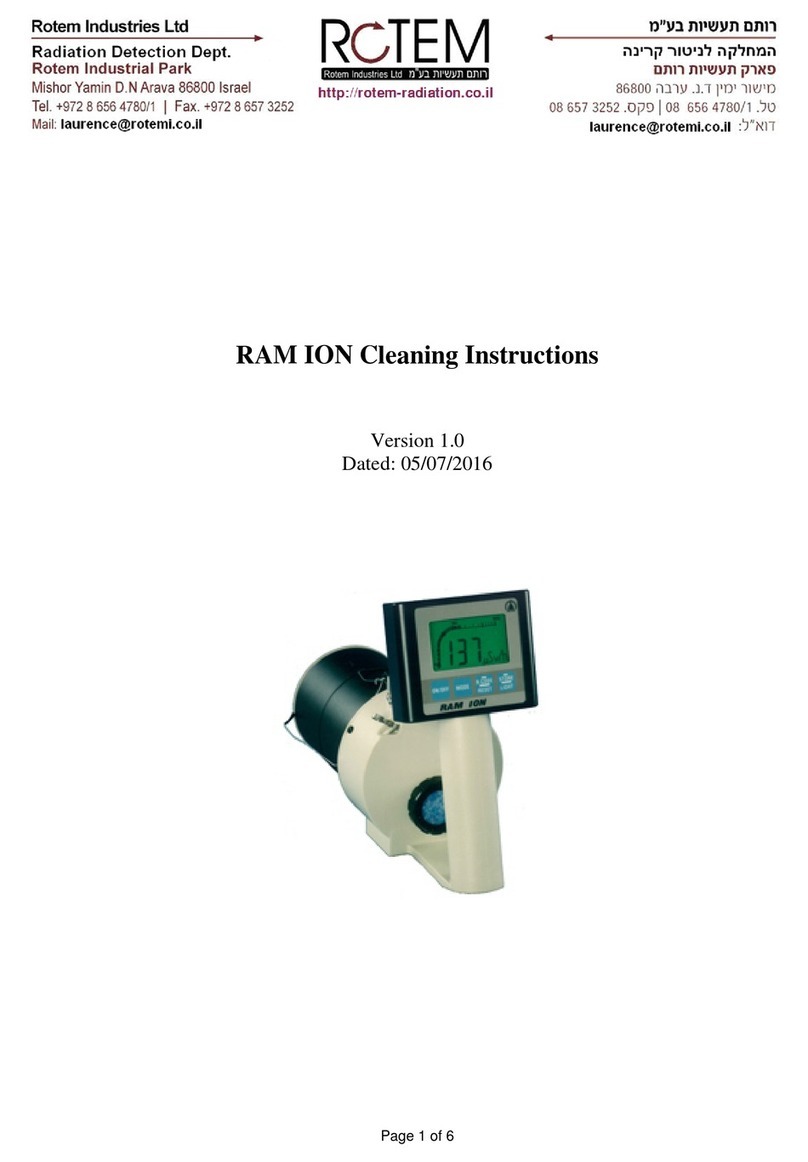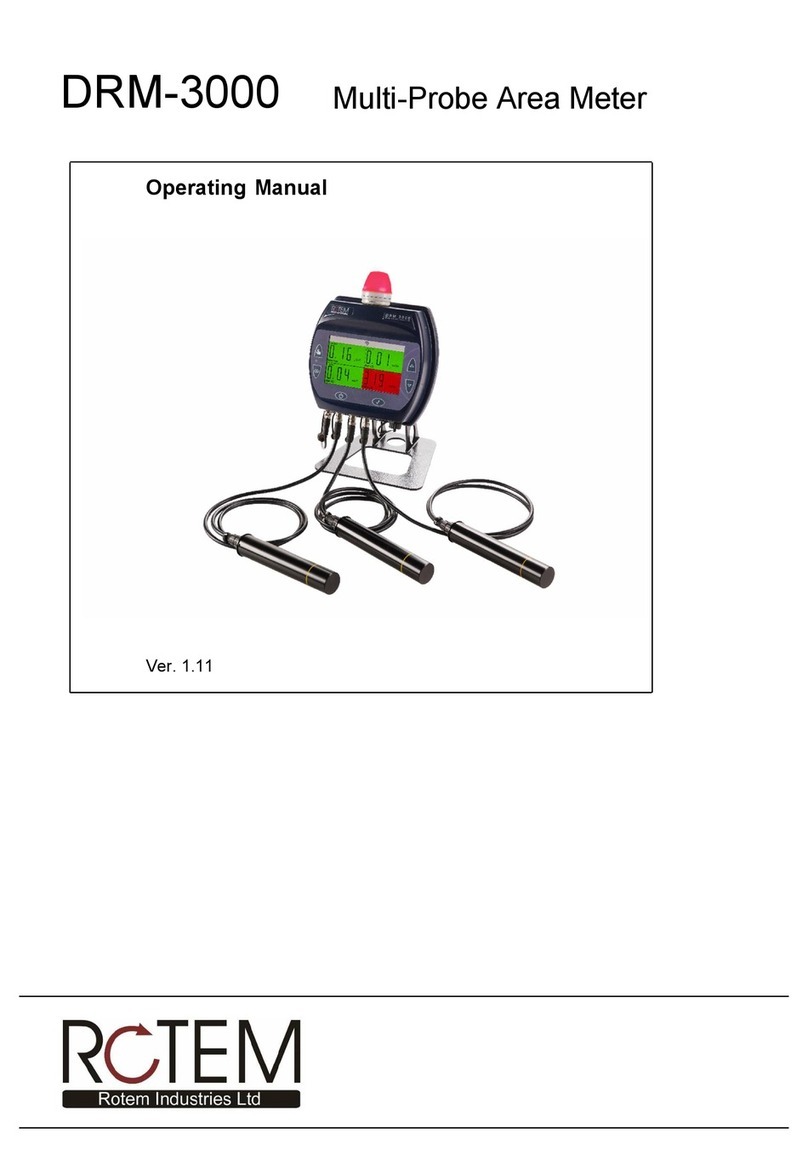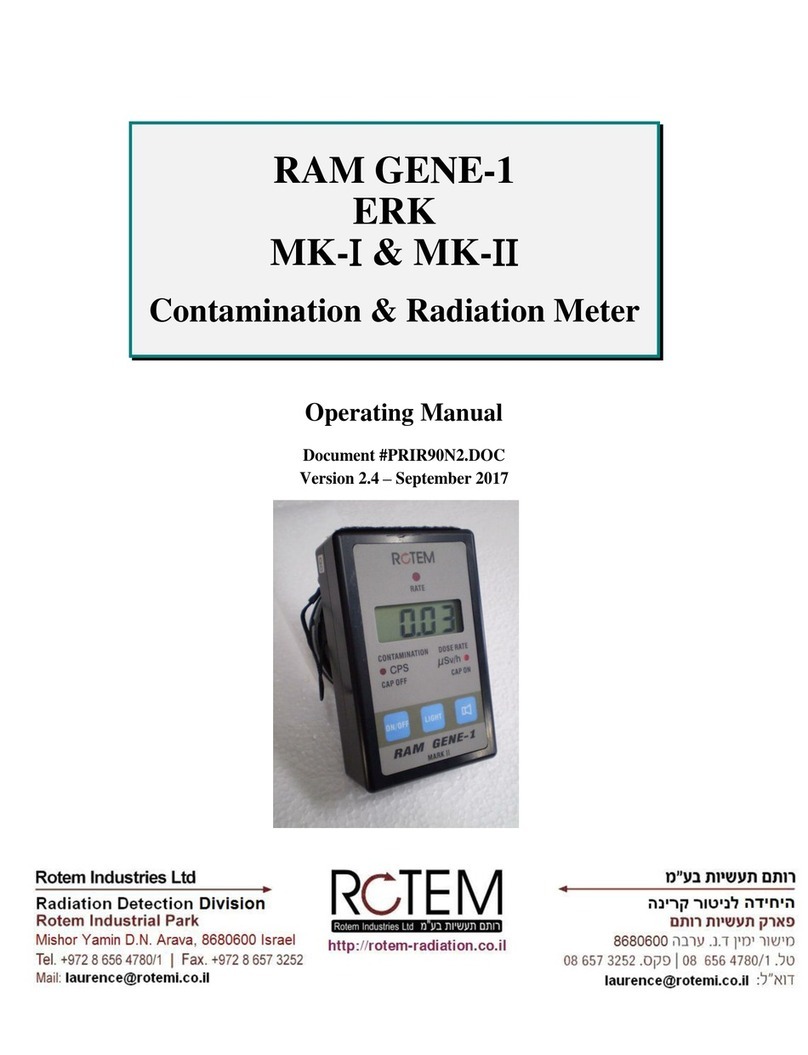
Area Monitor Probes / Operating & Maintenance Manual (Sv/h) Page 3
Table of Contents
1. Area Monitor Probes ................................................................................................................... 5
1.1. General Description........................................................................................................ 5
1.2. Applications ................................................................................................................... 6
1.3. AMP Communication .................................................................................................... 6
2. Specifications ........................................................................................................................ 8
3. Operating Instructions ......................................................................................................... 12
3.1. Preparation for Use ....................................................................................................... 12
3.2. Starting-up .................................................................................................................... 12
3.3. General Functions ........................................................................................................ 12
3.4. Turning the Meter on .................................................................................................... 12
3.5. Dose Status ................................................................................................................... 13
3.6. Threshold Selection ...................................................................................................... 13
3.7. Alarms .......................................................................................................................... 15
3.8. Push-button Functions .................................................................................................. 16
3.9. Meter’s Parameters Setting Flowchart ......................................................................... 16
3.10. Battery Replacement .................................................................................................... 18
4. Communications ................................................................................................................. 19
4.1. Meter to AM-16 Area Monitor (wired) or to WRM ..................................................... 19
4.2. Direct Download from Meter to PC ............................................................................. 19
4.3. Hardware Components ................................................................................................. 19
4.4. Communication Protocol.............................................................................................. 20
5. Calibration .......................................................................................................................... 21
5.1. Switching the AMP’s Meter into Calibration Mode .................................................... 21
5.2. Calibration for AMP-50 ............................................................................................... 22
5.3. Calibration Procedure for AMP-50 .............................................................................. 23
5.4. Calibration for AMP-100 ............................................................................................. 24
5.5. Calibration Procedure for AMP-100 ............................................................................ 25
5.6. Calibration for AMP-200/300 ...................................................................................... 26
5.7. Calibration Procedure for AMP-200/300 ..................................................................... 26
5.8. CPU Unit Pulser Check ................................................................................................ 28
6. Energy Response ................................................................................................................. 29
7. Setting ID Number .............................................................................................................. 31
7.1. Factory Serial Number ................................................................................................. 31
7.2. Setting and Checking the ID #...................................................................................... 31
7.3. Correlation Between the Factory Serial Number and the ID # ..................................... 31
8. Electronic Block Diagrams Description ............................................................................. 32
8.1. Meter ............................................................................................................................ 32
8.2. WRM Adapter .............................................................................................................. 34
8.3. Detector ........................................................................................................................ 35
8.4. Cables ........................................................................................................................... 35
8.5. Power Supply ............................................................................................................... 35
9. Troubleshooting .................................................................................................................. 35
9.1. Meter does not turn on ................................................................................................. 36
9.2. Meter does not turn off ................................................................................................. 36
9.3. Meter parameters are not saved in the internal memory .............................................. 38































